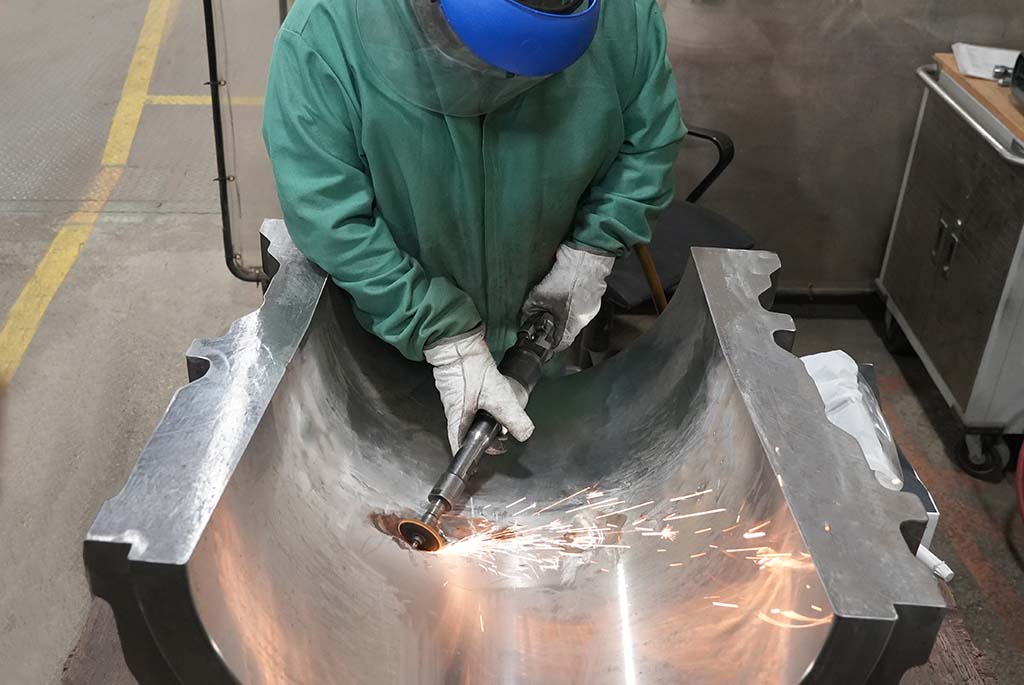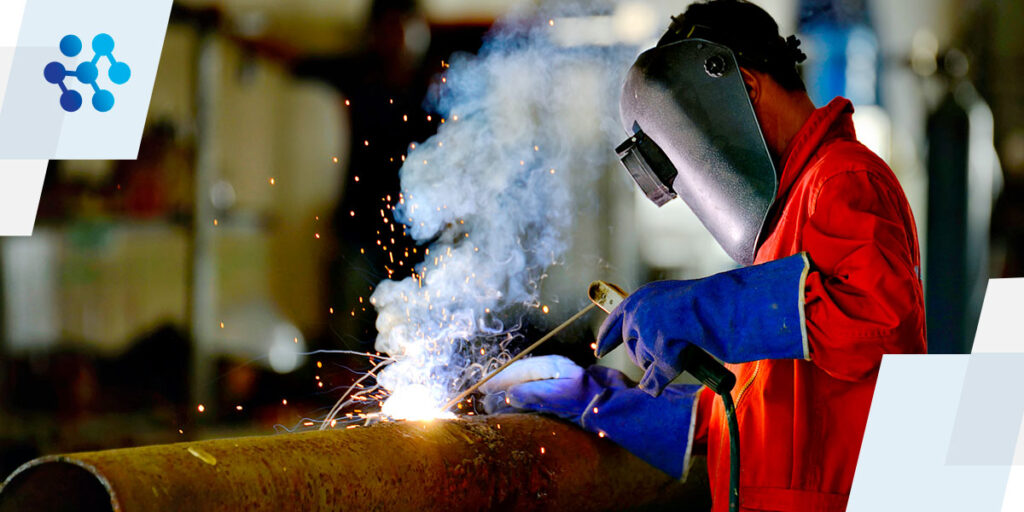Typical Welding Repair Issues and How to Address Them Successfully
Welding repairs typically encounter a range of issues that can jeopardize the honesty of the end product. Typical problems include poor penetration, porosity, and imbalance, to name a few. Each defect offers unique difficulties that need details approaches for resolution. Understanding these concerns is important for welders intending to enhance their abilities and end results. This discussion will explore these typical welding repair problems and reliable approaches to resolve them.
Insufficient Penetration
Inadequate penetration occurs when the weld metal falls short to totally fuse with the base product, leading to weak joints and prospective structural failings. This issue commonly comes from insufficient heat input, incorrect electrode angle, or incorrect welding rate. Welders might encounter inadequate infiltration as a result of a miscalculation of the necessary specifications for a details product thickness or kind. Additionally, contamination on the base product's surface area can impede efficient bonding, worsening the trouble. To attend to inadequate penetration, welders should ensure suitable setups on their tools and preserve a clean job surface area. Regular examination of welds is suggested to recognize any type of shortages early, enabling prompt improvements and the prevention of endangered structural honesty in welded settings up.
Porosity
Porosity is a common defect in welded joints that materializes as small gas bubbles caught within the weld steel. This issue can endanger the stability of the weld, causing reduced toughness and potential failing under tension. Montana Mobile Welding and Repair. Porosity generally emerges from contamination, moisture, or inappropriate welding strategies, which permit gases to leave into the liquified weld pool. To deal with porosity, welders need to guarantee proper surface preparation, preserve a clean functioning atmosphere, and make use of suitable welding specifications. Furthermore, choosing the ideal filler product and protecting gas can mitigate gas entrapment. Normal inspection and testing of welds can help determine porosity early, ensuring prompt restorative actions are taken, thereby maintaining the quality and integrity of the welded structure
Imbalance
Imbalance in welding can arise from numerous aspects, including inappropriate arrangement and thermal expansion. Understanding the origin is necessary for effective resolution. Numerous correction techniques are available to realign parts and guarantee architectural integrity.
Root causes of Misalignment
Welding misalignment frequently stems from a selection of underlying concerns that can jeopardize architectural stability. One primary reason is inappropriate fit-up of parts prior to welding, which can lead to voids and unequal surface areas. Variants in thermal growth during the welding process can likewise lead to distortion, especially if the products being joined have various coefficients of growth. Furthermore, inadequate fixturing and clamping might stop working to hold elements safely in position, causing motion during welding. Improperly conserved tools, including welding machines and devices, may present inconsistencies in the weld grain, further contributing to misalignment. Finally, operator mistake, stemming from inadequate training or experience, can additionally play a considerable role in creating misaligned welds.
Adjustment Strategies Available
Addressing imbalance efficiently requires a combination of corrective strategies customized to the details issues at hand. One usual approach is using jigs or components to hold parts in the correct placement throughout welding, ensuring consistent positioning. Additionally, pre-heating the materials can help in reducing distortion and boost fit-up. For substantial imbalance, mechanical realignment techniques, such as using hydraulic jacks or clamps, can be used to remedy the setting prior to welding. Post-weld warmth therapy might additionally be essential to relieve stresses caused by misalignment. Finally, careful inspection and adjustment during the setup phase can prevent imbalance problems from ending up being significant troubles, promoting a smoother welding procedure and improving overall architectural stability.
Distortion
Distortion is a typical difficulty in welding that can emerge from various aspects, consisting of uneven heating & cooling. Understanding the reasons of distortion is essential for executing reliable avoidance techniques. Addressing this issue not only enhances architectural stability but likewise improves the total top quality of the weld.
Reasons for Distortion
When subjected to the extreme heat of welding, materials typically undergo adjustments that can lead to distortion. This phenomenon primarily occurs from thermal expansion and contraction during the welding process. As the weld area heats up, the material expands; upon cooling, it acquires, which can develop inner stresses. Furthermore, unequal heating across a workpiece can exacerbate these tensions, leading to warping or bending. The sort of material also plays a substantial duty; steels with differing thermal conductivity and coefficients of growth may react in a different way, causing uncertain distortions. Moreover, poor joint layout and poor fixturing can add to imbalance during welding, enhancing the possibility of distortion. Recognizing these reasons is essential for reliable welding repair and avoidance techniques.
Avoidance Techniques
Effective prevention strategies for distortion throughout welding focus on managing heat input and guaranteeing appropriate joint design. Keeping a consistent heat input assists to lessen thermal growth and contraction, which can bring about distortion. Using techniques such as pre-heating the work surface can additionally decrease the temperature level gradient, advertising consistent home heating. Additionally, choosing suitable joint layouts, such as go to the website T-joints or lap joints, can improve stability and decrease stress focus. Applying proper fixturing to secure the workpieces in place better aids in keeping placement during the welding procedure. Staggered welding series can distribute warmth much their website more equally, protecting against localized distortion. By using these techniques, welders can greatly reduce the likelihood of distortion and improve the total quality of their welds.
Fracturing
Cracking is a common problem encountered in welding repair services, frequently resulting from different variables such as improper cooling prices, product selection, or inadequate joint prep work. The event of splits can significantly compromise the honesty of the weld, leading to possible failings during procedure. To resolve this concern, welders should initially assess the source, making certain that products work and appropriately chosen for the specific application. In addition, managing the cooling price during the welding process is necessary; fast air conditioning can generate tension and bring about cracking. Proper joint layout and prep work likewise add to decreasing the risk. Carrying out these approaches can improve weld top quality and longevity, ultimately lowering the possibility of fracturing in completed weldments.

Insufficient Fusion
A substantial problem in welding repairs is incomplete fusion, which takes place when the weld metal does not properly bond with the base product or previous weld passes - Montana Mobile Welding and Repair. This defect can result in weaknesses in the joint, potentially jeopardizing the integrity of the bonded structure. Variables adding to incomplete fusion include not enough heat input, inappropriate welding technique, and contamination of the surfaces being joined. To resolve this issue properly, welders ought to guarantee appropriate pre-weld cleaning and surface prep work, as well as readjust their welding criteria to achieve appropriate infiltration and fusion. Normal assessment throughout the welding procedure can additionally help determine insufficient blend early, enabling prompt rehabilitative actions to improve the overall high quality of the weld
Overheating
While welding repair services can enhance structural integrity, overheating provides a considerable challenge that can cause material deterioration. Extreme heat throughout welding can modify the mechanical homes of metals, leading to minimized toughness, increased brittleness, and warping. This phenomenon is particularly essential in high-stress applications where structural dependability is vital. Identifying overheating can entail visual evaluations for staining or distortion, in addition to checking temperature level throughout the welding procedure. To mitigate the dangers connected with overheating, welders should employ ideal strategies, such as regulating warmth input, readjusting traveling rate, and making use of suitable filler materials. In addition, implementing pre- and post-weld warm treatments can assist recover product residential or commercial properties and improve the total quality of the repair service, making sure long-lasting efficiency and safety.
Often Asked Questions
What Are the Typical Signs of a Welding Defect?

Exactly How Can I Test My Welds for Quality?
To check welds for quality, one can make use of visual assessments, ultrasonic screening, and radiographic techniques. Each strategy ensures structural honesty, determines issues, read this article and confirms adherence to specified standards, ultimately enhancing the reliability of the bonded joints.
What Security Safety Measures Should I Take While Welding?
When welding, one need to focus on safety and security by using ideal individual protective tools, ensuring correct air flow, protecting flammable materials away, maintaining a tidy office, and understanding environments to protect against crashes and injuries.
Can I Repair a Weld Without Remodeling the Entire Joint?
Repairing a weld without redesigning the entire joint is feasible, depending upon the damage (Montana Mobile Welding and Repair Belgrade Fabrication). Methods such as grinding, adding filler material, or making use of a welding process can efficiently address certain flaws while preserving the surrounding framework
What Devices Are Crucial for Efficient Welding Repairs?
Vital devices for reliable welding repair services consist of a welding maker, wire brush, mill, protective equipment, clamps, and filler products. Each tool plays a vital function in guaranteeing high quality and safety throughout the repair procedure. Porosity normally occurs from contamination, dampness, or inappropriate welding strategies, which permit gases to leave into the liquified weld pool. Improperly maintained devices, including welding machines and devices, may introduce variances in the weld bead, additional adding to imbalance. When subjected to the extreme warm of welding, materials usually undertake modifications that can lead to distortion. Cracking is an usual issue come across in welding repairs, often resulting from numerous elements such as inappropriate cooling prices, product selection, or poor joint preparation. A considerable concern in welding repair services is insufficient combination, which occurs when the weld metal does not properly bond with the base product or previous weld passes.